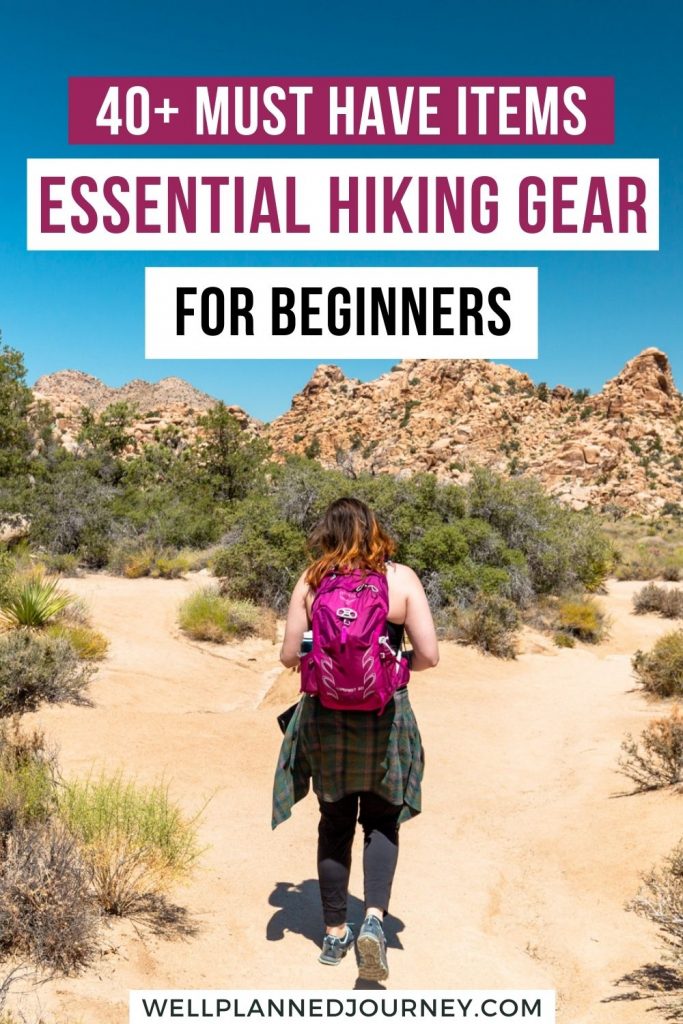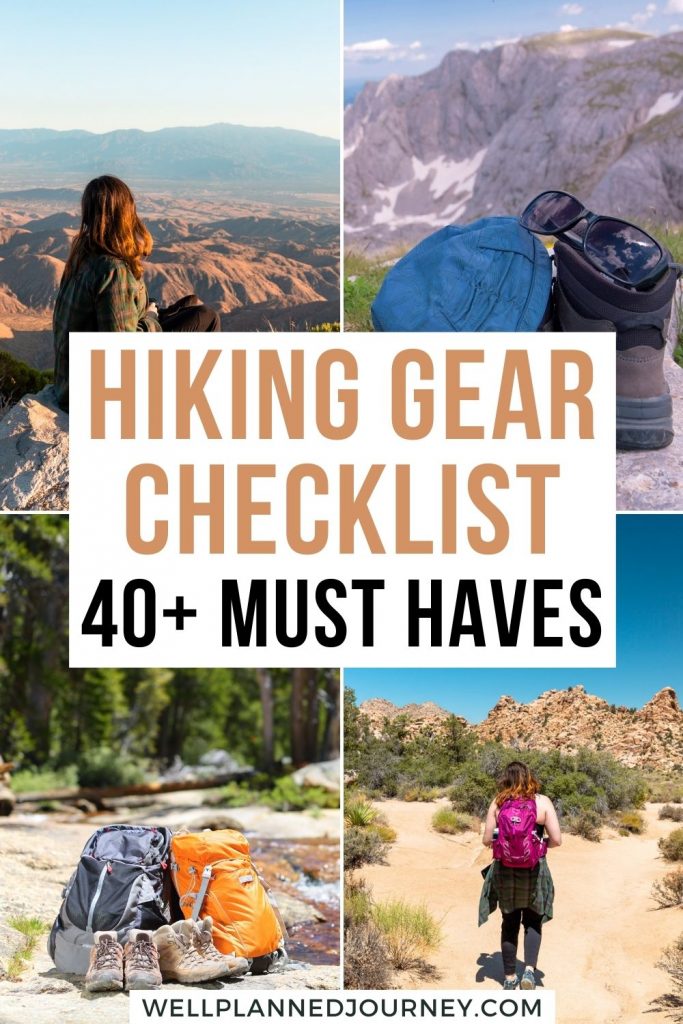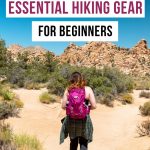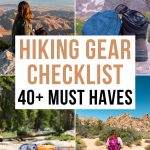Are you heading out for a hike but unsure what to bring along?
Hiking is one of the best ways to escape our day-to-day lives and explore nature. But there’s more to planning a hike than finding the perfect trail.
You also need to pack the right hiking essentials and gear!
Knowing what to pack for hiking can feel overwhelming, particularly if you’re a beginner. That’s why I’ve compiled a list of the best hiking gear, including the essentials you should bring on every hike.
Let’s dive into this comprehensive guide on hiking essentials!
This post may contain affiliate links, where I may receive a small commission at no additional cost to you. Read more in this disclosure policy.
Free Hiking Packing List
Are you planning a hike but aren’t sure what to pack? Get this free, printable hiking gear checklist. This guide covers the 30+ items you need for your next hike, from the 10 hiking essentials to the luxury items to enjoy your adventure.
Download the free hiking gear checklist here.
The Ten Hiking Essentials
You’ll hear about the ten hiking essentials if you read an article on hiking for beginners. These are the must-have hiking gear for every hike, regardless of distance.
The ten essentials include gear for navigation, first aid, and shelter that could save your life if you get stranded overnight.
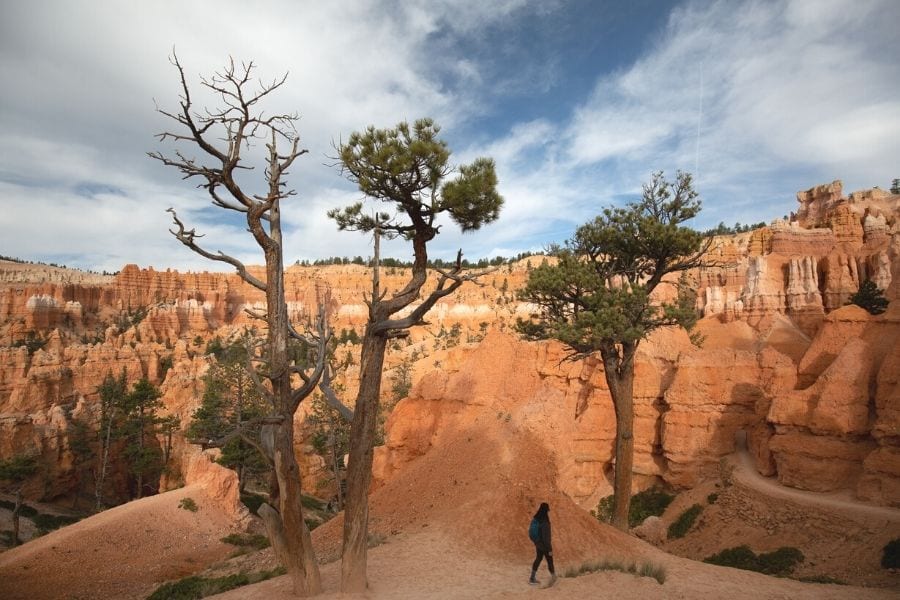
These hiking essentials belong at the top of your list of what to pack for a day hike.
- Hiking First Aid Kit – Hiking can result in unexpected injuries, and you should be prepared to handle all types of injuries. If you’re in a larger group, have multiple people carry first aid kits. If you’re hiking with a dog, bring a hiking first aid kit for your pup, too.
Tip for Your First Aid Kit:
If you’re taking the DIY approach for your first aid kit, include antiseptic wipes, bandages, antibiotic ointment, medical tape, gloves, blister treatment, and medications like ibuprofen and Benadryl. It’s also a good idea to include a whistle to attract attention.
- Emergency Shelter – Temperatures can drop dramatically overnight. That’s why you should always carry a compact shelter, called a bivvy, to protect you if you have to sleep outdoors. A bivvy is a small heat-trapping sleeping bag that rolls up to be smaller than your fist. It’s lightweight and fits perfectly in the bottom of the backpack.
- Extra Water – The most crucial item on this list is water, particularly for strenuous hikes in hot, arid environments. You should carry at least 0.5L of water for every hour of hiking. Double that for strenuous, high-heat hikes. Carry your water in a lightweight, reusable water bottle or hydration reservoir (also called a bladder). Avoid dense, stainless steel water bottles on hikes as they add unnecessary weight.
Expert Tip:
I also recommend packing a small water filtration device for emergencies. If you were to get stranded, having a way to filter water from a stream could save your life! I recommend the Lifestraw since it’s lightweight and compact.
- Headlamp – Every hiker should carry some sort of illumination. I prefer a headlamp over a flashlight to keep your hands free while hiking. Ensure your headlamp has fresh batteries before heading out for a hike, and always pack extra batteries in your backpack.
- Repair Kit & Tools – Gear rips and tears. That’s why it’s crucial to pack a mini repair kit to mend any issues on the trail. While gear repair tape can be valuable for equipment like tents, you can get by with duct tape for shorter hikes. I recommend carrying a small pocket knife or multi-tool, like a Swiss Army Knife, in your hiking day pack, too.
- Navigation – You should carry a navigation device on your hike, even with a keen sense of direction. The most reliable navigation is a physical map and a compass. You can pick one of these up at the park headquarters or sometimes at the trailhead. If there’s a trail map at the start of the hike, I like to take a picture of that, too.
GPS Navigation Tip:
While physical maps are the most reliable, digital maps are more convenient. I like to use digital maps from AllTrails to track my progress on the hike. With AllTrails+, you can download hikes and make them available offline. For more advanced hikers, consider investing in a Garmin InReach device. This GPS device and personal locator beacon can help you navigate and communicate in the wilderness.
- Fire Starter – One of the most critical of the ten essentials is a way to start a fire if you have to spend the night in the wilderness. I recommend carrying stormproof matches and a fire starter. These items are lightweight, inexpensive, and don’t take up much space in your hiking day pack – perfect for something you hope never to use!
- Extra Layers – Regardless of the time of year, you should store additional layers in your pack. Weather can change quickly, so you should be prepared for colder temperatures and rain. I recommend packing either a lightweight pullover or a fleece jacket, plus a waterproof rain jacket. The following section on clothing covers all the details of the best hiking clothes.
- Sun Protection – As with any outdoor activity, protecting yourself from the sun is important. Sunscreen is essential for any hike (don’t forget to reapply!). But your protection doesn’t stop at sunscreen. You should also carry a sun hat and sunglasses to protect your face, neck, and eyes. Look for moisture-wicking, quick-drying fabrics in your hiking hat. A lip SPF is also a must!
- Extra Food – Besides the fuel you’ll need to get through your hike, pack plenty of extra snacks just in case you get lost or stranded. I prefer calorie-dense foods like CLIF bars, jerky, or nuts. Don’t forget to bring a trash bag to pack out all trash, an essential part of the Leave No Trace principles.
Read More: Best Hiking Gear on Amazon
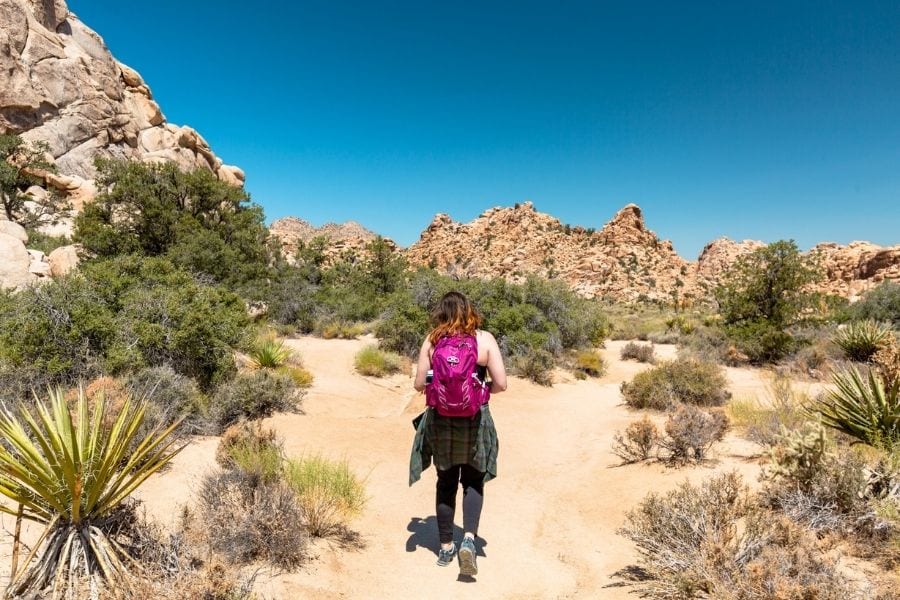
Essential Hiking Gear and Equipment
In addition to the ten essentials, there are several gear items you should consider packing for your next hike.
- Hiking Backpack – A backpack keeps you hands-free and evenly distributes the weight of your essentials while you hike. I recommend the Osprey Talon 22 for men and the Osprey Tempest 20 for women. These backpacks are designed with hikers in mind, providing interior and hip pockets, chest and waist straps, mesh paneling for breathability, clips for bike helmets and trekking poles, and a sleeve for a hydration reservoir.
Tip for Finding the Right Backpack Size:
Backpack capacity is measured in liters, based on the volume held in the body of the bag. You’ll be fine opting for a pack between 15 and 30 liters for most hikes. For those bringing only the essentials and thin outer layers, a pack under 20L should work fine. If you’re like me and like to carry plenty of snacks and a camera, you’ll want a pack between 20-35L.
- Trekking Poles – Trekking poles can be a game changer for steep or rocky hikes. The poles work by helping you remain stable and remove pressure on your knees. Many hikers, especially beginners or backpackers, have found trekking poles to alleviate pain when hiking. Like all hiking gear, lightweight is critical. Carbon fiber or aluminum trekking poles are the gold standard.
- Walkie-Talkies (Optional) – If you’re splitting up from a group or arranging to meet at trailheads, a set of two-way radios can be a great way to communicate, particularly if you don’t have cell phone service. I found them particularly useful when arranging transportation with friends or family after one-way hikes.
- Microspikes (Optional) – A pair of quality microspikes is necessary if hiking in wintry conditions. These small teethed chains slip on over your hiking boots. The spikes provide extra traction on snow and ice to prevent falls.
- Bear Spray (Optional) – If you’re hiking in grizzly bear country (Montana, Wyoming, Idaho), you’ll want to carry bear spray. In an emergency, you can spray the bear to allow yourself to escape. Bear spray is only used as a last resort if slowly backing away isn’t an option. Bear spray is available at outdoor retailers like REI. It is essential for hiking in places like Yellowstone and Glacier National Park.
Read More: Ultimate Guide to Hiking for Beginners
Best Hiking Clothes and Footwear
Another crucial piece of preparing for a hike is wearing the proper clothing. You want to dress in breathable, durable, comfortable hiking clothes.
I recommend avoiding fabrics like denim and cotton as they are heavy and absorb sweat and water, making them heavier.
Look for materials like merino wool or polyester blends for breathability and ripstop nylon for durability. For warmth, down, synthetic down, or fleece are excellent options.

- Base Layers – This is your first layer to wear when hiking. Depending on the temperature, a base layer could range from a short-sleeve hiking top to a long-sleeve merino wool layer. No matter the temperature, you want to choose base layers that will dry quickly and resist odors.
Layering Tips:
I recommend a short-sleeve hiking top like the Patagonia Capilene Cool tee for warmer weather. Opt for a merino wool base layer in colder weather. These are lightweight but incredibly warm long-sleeve tops perfect for layering. Merino wool tops are odor-resistant, making them great for long hikes or backpacking trips.
- Hiking Pants – For pants, you want durable, rip-resistant materials. I recommend wearing long pants instead of shorts to protect your legs from overgrowth along the trail. The best hiking pants are quick-drying and won’t snag on the trail. For women, high-quality leggings are also a great option. Wear a merino wool base layer bottom underneath your hiking pants in cold weather.
- Hiking Boots – Shoes can make or break your hike. You should wear high-quality, broken-in hiking boots or shoes with good tread for every hike. For hikes with rough terrain, I recommend hiking boots. They provide more stability and a firm grip while providing ankle support. I like hiking in trail runners, like the Altra Lone Peaks, instead of boots for shorter hikes that don’t require navigating rocky surfaces. Always avoid old sneakers with limited traction or flip-flops.
- Outer Layers – You may want several outer layers when hiking, depending on the weather. I often start with a long-sleeved outer layer and stow it in my backpack as the day goes on. For hot summer hikes, I recommend a lightweight merino wool half-zip. Opt for something warmer in spring and fall, like a fleece pullover. For colder months, you’ll want a down jacket. These puffy coats are the best way to stay warm on a hike and pack easily into a backpack. Down jackets are rated based on their fill (higher down fill = more warmth). I recommend roughly 800-fill for winter.
- Rain Jacket – I keep a rain jacket in the bottom of my backpack for every hike, just in case. Always opt for a rain jacket with Gore-Tex, a waterproof, breathable fabric. While fully waterproof rain jackets are a bit pricier, they are well worth it. The REI XeroDry rain jacket is an excellent affordable, yet high-quality option.
- Wool Socks – Merino wool is hands down the best material for hiking apparel. In socks, merino wool prevents blisters thanks to its quick-drying capabilities. They come in different thicknesses and heights so you can wear them with any type of hiking shoe. For top-of-the-line socks, Darn Tough socks are the best. For a more budget-friendly option, I recommend REI’s hiking socks.
- Breathable Underwear – Breathable and sweat-wicking undergarments are crucial for long hikes. You’ll want quick-drying and odor-resistant materials. Icebreaker makes merino wool underwear for women and boxer briefs for men designed for comfort while hiking.
- Hat – One of the best ways to protect yourself from the sun on a hike is with a hat. You can opt for anything from a wide-brimmed sun hat to a baseball cap. I like to wear a beanie in colder weather to keep my head warm.
- Gloves – If you’re hiking in cold weather, you’ll want to pack a pair of gloves to keep your fingers warm! Look for touchscreen-friendly gloves, like the Smartwool Liner Tech gloves. You’ll want something more insulated for freezing days, like the Black Diamond ScreenTap gloves.
Read More: Best Women’s Hiking Clothes in 2024
Additional Hiking Must-Haves
While the only truly essential items for a hiking trip are a backpack, the 10 essentials, and the right clothing, I recommend packing a few extras. These items will go a long way towards making your hike more enjoyable and safe.
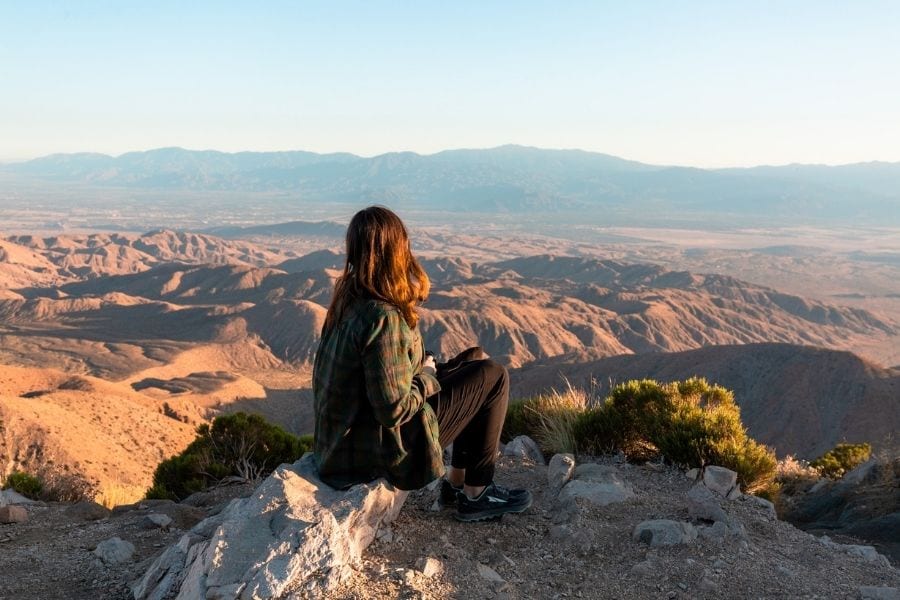
- Identification & Money – Carrying your ID, credit cards, insurance cards, and cash on a hike is always a good idea. You never know when you’ll need them, and it’s better to be prepared.
- Itinerary for Your Car – Leave a printed copy of your itinerary in your car parked at the trailhead for longer hikes in more remote areas. If you were to get lost or stranded, this would help park rangers locate you. I also ensure a friend or family member knows my itinerary.
- Trowel & Toilet Paper – Leave No Trace principles involve burying your waste. If you have to go #2 on a hike, you should bring a trowel (a small shovel) to dig a hole and bury it. For toilet paper, I recommend either burying your toilet paper deep in the hole or packing out your toilet paper in a Ziploc bag. A pee rag like the Kula Cloth is an excellent option if you prefer to be eco-friendly.
- Trash Bag – A fundamental principle of Leave No Trace is to pack out all trash. This trash includes everything from snack wrappers to water bottles to orange peels. You can bring a full-size trash bag or just a small grocery bag, depending on how much trash you’ll have.
- Bug Spray – Mosquitos are quite the pest, particularly in the summer. Packing a small, travel-size bug spray is a great way to fend them off. I like to use a more natural lemon eucalyptus bug repellent or a Picardin bug spray. The smell isn’t quite as overwhelming, and I don’t feel I’m covering my body with toxic chemicals.
- Hair Ties – If you have long hair, always pack extra hair ties, even if you plan on hiking with your hair down. You’ll be thankful for extra hair ties when you get hot, or your hair ties break.
- Hand Sanitizer – Since washing your hands outdoors isn’t possible, I recommend packing a travel-size hand sanitizer in your hiking backpack. Be sure to use it after going to the bathroom or before eating!
- Binoculars – If you’re hiking in an area known for wildlife, you’ll want to bring binoculars! You should always keep your distance from animals, but binoculars can be a great way to see wildlife up close. I’ve watched everything from bald eagles to moose in my pair! For most hikers, a simple, compact pair of binoculars will work.
- Hammock – Packing a hammock can be a great way to relax on those casual weekend hikes. You only have to fasten the hammock between two trees to use them! You can cuddle up and enjoy the sound of the outdoors while reading a good book or taking a little nap.
- Portable Charger – Phone batteries die faster when searching for a signal or running GPS apps. Both of these tend to happen a lot when hiking! I like carrying a small portable charger or solar power bank in my backpack for long hikes to ensure I don’t run out of battery and can still navigate the trail. It’s also a great way to power your other hiking gadgets.
- Go Pro or Camera – Whether you take pictures and videos on your phone or a fancy camera, you’ll enjoy your hike photos for years. I recommend investing in a GoPro for those who want stellar images and videos from the trail. GoPros records in high resolution, is waterproof, and is ultra-durable. If hiking with a larger camera, invest in a camera clip to fasten it to your backpack to keep your hands free.
Read More: 17 Best Hiking Apps for Your Smartphone

Frequently Asked Questions on Essentials for Hiking
What should I pack for a day hike?
You should pack a hiking backpack, the ten hiking essentials, extra clothing layers, durable hiking shoes, and a few non-essentials like a trowel, portable charger, and smartphone.
What should you not take on a hike?
You should not take valuable items, like jewelry or nice clothes. Don’t bring multiple pairs of shoes and non-essential jackets. Don’t wear clothing made of cotton or denim, as these materials get heavy and don’t dry quickly.
What do beginner hikers need?
Beginner hikers should always carry the ten essentials and a hiking backpack. The ten essentials include potentially lifesaving gear like navigation, headlamps, a first aid kit, and extra water. Be sure to pack additional layers and snacks, too!
What are the ten essentials for survival?
The ten essentials for survival in hiking are navigation, illumination, sun protection, a first aid kit, a repair kit and multi-tool, a fire starter, an emergency shelter, extra food, extra water, and extra clothing layers.
What should I wear for a day hike?
You should wear lightweight, breathable, quick-drying clothes for a day hike. Look for materials like merino wool for base layers, fleece or down jackets, and hiking pants. On colder days, don’t forget to wear gloves and a hat.
Final Thoughts on What to Pack for Hiking
Don’t let packing for your next hike be overwhelming. While this list covers the best day hiking gear, you just need the essentials.
Before you head out on your hike, be sure to pack:
- A quality hiking day pack
- The Ten Hiking Essentials
- Extra layers, like a rain jacket and a pullover
- Durable hiking boots or shoes;
- And a few luxury, non-essential items to make your hike more enjoyable
Looking for more hiking gear recommendations? Check out these posts!
- Best Hiking Clothes for Women in 2024
- Best Hiking and Camping Gear on Amazon
- 17 Best Hiking Smartphone Apps
- Ultimate Guide to Hiking for Beginners
Are you planning a hike but aren’t sure what to pack? Get this free, printable hiking gear checklist. This guide covers the 30+ items you need for your next hike, from the 10 hiking essentials to the luxury items to enjoy your adventure.
Download the free hiking gear checklist here.
Don’t Forget to Save This Post on Pinterest
